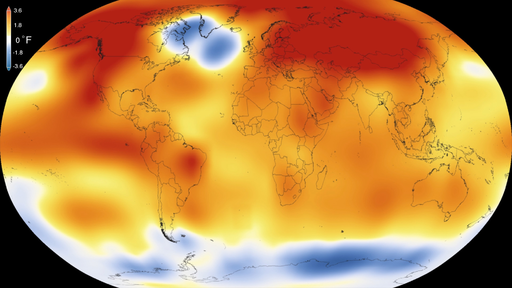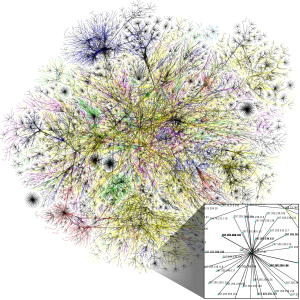Age of Fire



With the constant media attention to the alleged Russian involvement in the last American election, there is perhaps more media attention to the issue of cyber-warfare than ever before. In this context, Shane Harris’ book, @ War: the Rise of the Military-Internet Complex is provides a sweeping overview of how the U.S. government and its corporate allies have sought to respond and use cyber tools for espionage and war.
Harris has a background as a journalist, and he has extensively interviewed people in both the U.S. federal government and industry. His work provides a deep understanding of how these actors view cyber-conflict. The book is particularly good at showing how corporations are intricately connected the armed forces in cyber-warfare: “Without the cooperation of the companies, the United States couldn’t fight cyber wars. In that respect, the new military-Internet complex is the same as the industrial one before it” (Harris, p. xxiii).
At the same time, this book views this issue through an American lens, and at times has an unreflective view of technology’s role in war. Ever since the Vietnam War, the United States has relied on technology to win wars, while not similarly prioritizing cultural, strategic and historical awareness. One can see this issue in the opening section of the book, which examines U.S. efforts to use cyber-espionage to target ISIS in Iraq, in what he describes as a triumph: “Indeed, cyber warfare -the combination of spying and attack- was instrumental to the American victory in Iraq in 2007, in ways that have never been fully explained or appreciated” (Harris, p. xxii). Even though his description of U.S. operations in Iraq is fascinating, this part of the work has not aged well, and confronts the reader with technology’s limitations more than its capabilities. …
I am honored to say that I was named the College of Urban and Public Affairs Researcher of the Year. As part of this award, Portland State University made a brief video about my work with public policy and infectious disease. As with all of the researchers from other colleges, I was given a list of 5 or 6 questions in advance of the video, the first of which was “Tell us a story about how you became involved in research.” We were also told that the final video would be two minutes or less. I was somewhat uncertain about how this would turn out given these time constraints, but at the awards ceremony I was impressed by how inspiring the videos were. I don’t know the name of the student who edited all these videos but they did an amazing job. Congratulations to all the awardees.
There is a strange paradox, which is that the United States is one of the greatest imperial powers ever known, but at the same time almost no American would ever describe their nation as having an empire, either now or in the past. Daniel Immerwahr addresses this contradiction in his recent article, “How the US has hidden its empire,” in the Guardian. This text would be useful both in an “Introduction to International Studies” class, or a “U.S. and the World,” course.

Lines of Light is a graphic novel by Dan Nott, which examines the “history and geography of the internet.” I was fortunate enough to meet the author at the Massachusetts Independent Comic Expo, which was held at Lesley University. This quarter I am teaching two courses on related topics (Digital Globalization as well as CyberWar and Espionage), so I was curious to view this work. This graphic novel is exceptional not only because it is visually engaging, but also because it takes a completely unexpected view of something that we all assume we understand. With his clear, concise prose to describe a physical world that we all rely upon, this book is filled with unexpected facts and insights.
One of the approaches that Nott takes is too look at how we use metaphors to talk about the internet, which can sometimes be misleading. The book starts with Senator Ted Stephens at the net neutrality hearing of 2006, where he tried too use a failed metaphor to describe the internet. From this moment, the work moves to consider more broadly how we all talk about the internet, and how accurate that language may be. While it might be easy to mock Senator Stephens, most of us also wrestle to describe something so abstract. Nott’s brilliance is being able to take these metaphors and place them into both a historical and a physical context, which is grounded by the detailed maps and imagery of the infrastructure that supports the internet. …
When the accident happened at Chernobyl’s #4 reactor in April 1986, it changed how people viewed nuclear power forever. Of course, there had already been the accident at the Three Mile Island power plant in the United States. But that was not the same as the meltdown that created a 4,000 square mile exclusion zone across the borders of what are now Belarus and Ukraine. The meltdown has become such a trope in popular culture that there is now even a horror movie about what has happened there in the aftermath. …
As the war against ISIS comes to an end, the media and politicians have been discussing how to deal with the return of those who fought for ISIS. What fewer people are aware of is that there were also volunteers who chose to embed with Kurdish units fighting against ISIS in northern Iraq and Syria. In some respects, as I discussed in an earlier blog, the conflict in the Middle East has resembled the Spanish Civil War, in that it drew in foreigners from around the world, who were motivated to join an ideological conflict. I’m not the first person to have that insight, which was also recently discussed in a documentary titled, “The Fight Against Islamic State – Robin Hood Complex.” …
Image above: Map of Europe, National Library of Ireland, Flickr Commons
For those of you who live in the Portland, Oregon area, I’m writing to recommend Dr. Evguenia Davidova’s spring class, “The European Union.” This is a thoughtfully designed face to face class with wonderful readings, as you can see from the book covers below; just looking at the reading list makes me want to join. Please see the details here:
I generally try not to simply repost articles on this blog, but Noelle Lenoir’s recent post, “France’s burning hate” does a good job placing France’s Yellow Vest movement into context. Her perspective is sympathetic to Macron. In this depiction, the Yellow Vest movement is an increasingly violent force, which hearkens back to the anti-Semitism and hatred of the 1930s. What is particularly interesting in her description of how establishment figures have adopted the Yellow Vest movement for their own ends. Lenoir is clearly sympathetic to Macron, and says that he is gaining legitimacy by his principled and restrained response to the crisis. I think, however, that the voices of the protesters are missing from the piece. Her essay could have gone into greater depth about their demands, and the grievances that have fueled the movement. In her depiction the Yellow Vests seem more an atavistic force than a reflection of deeply held beliefs.
As in discussions of populism in the United Sates, Lenoir points the finger at the impact of Russian fake news, which incites popular unrest. Last week in my Cyberwar and Espionage class my students discussed Russia’s fake news and propaganda efforts. Collectively, they made a few points: foreign influence in politics and elections is nothing new; outside actors could only have an influence when the U.S. is deeply divided, and the apparent success of the Russian troll factories -which are quite real- may overshadow other political forces driving discontent. While Russia is certainly trying to sow dissent and protest in the West, I also believe that its efforts have become a convenient scapegoat to explain protest movements and unrest. Does Russia really have the influence ascribed to it? If so, what are the weaknesses in Western societies that permit this? And how many people in the United States or France are really following RT, or consuming fake news on social media?
Despite the gaps in the piece, I do think that Lenoir’s piece provides a useful perspective on the Yellow Vest movement, which is well worth reading.
What is the single most important factor in shaping global health in the developed world? Interestingly, it does not appear to be access to the most technologically sophisticated medical technology. In the chapter on health in our textbook, I start by saying: “Chile, Costa Rica, Cyprus, Guadalupe, Hong Kong, Israel, Malta, Martinique, Singapore, and the United Arab Emirates are a diverse set of nations and territories. Yet they all have one fact in common: their citizens live longer than those of the United States, as do the citizens of many developed countries (Smallman and Brown, 2015, p. 236). Lee Miller and Weilu have an article titled “These are the World’s healthiest nations” in Bloomberg (February 24, 2019) which looks at global health statistics. The methodology looked at a number of factors -not only life expectancy- to rank countries. The top five countries were Spain, Italy, Iceland, Japan and Switzerland. There are many such rankings, and each one has methodological questions or choices. But all such national rankings of health can leave you questioning what you think you know, particularly about the role of diet in health. …